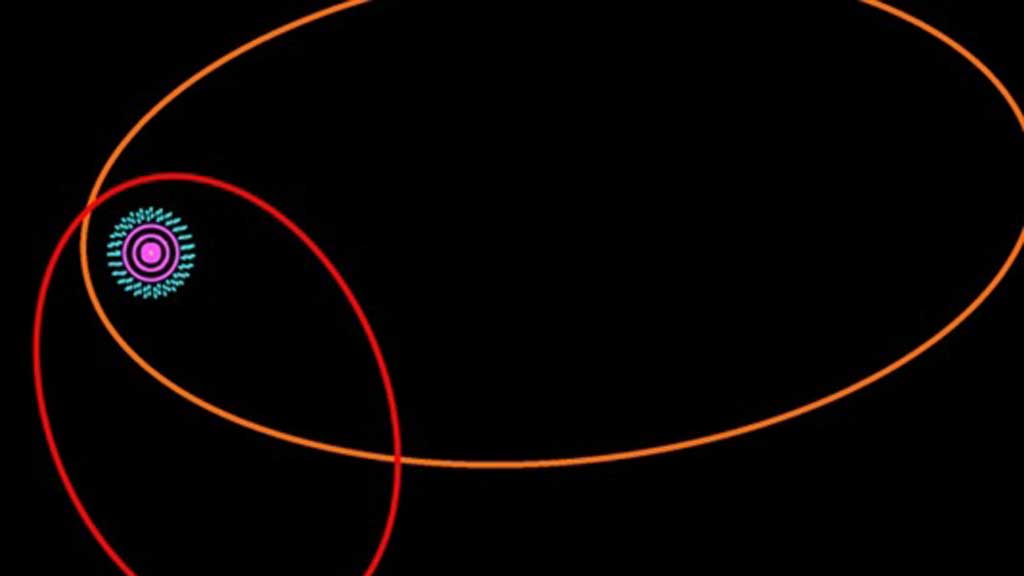Is there anybody out there? New planet could hold life
A new planet – similar size to the earth – could contain some life forms because it has the right temperatures to form water, scientists say.

Above: the artist’s concept depicts Kepler-186f , the first validated earth-size planet to orbit a distant star in the habitable zone (Nasa)
Kepler-186f is almost exactly the same size as earth and occupies its parent star’s “habitable zone” where temperatures are mild enough to allow liquid surface water. If the planet has lakes or oceans, it would increase the chances of extra-terrestrial life evolving there.
But anything living on the world may have to withstand extra large doses of radiation from its active sun.
‘Habitable planets’
US astronomer Dr Stephen Kane, a member of the Kepler team, said: “Some people call these habitable planets, which of course we have no idea if they are. We simply know that they are in the habitable zone, and that is the best place to start looking for habitable planets.”
Kepler-186 is an “M-dwarf” star 795 light years away that is smaller and cooler than the sun. It is orbited by a family of five known planets. Kepler-186f, the latest to be discovered, is the outermost.
Because its star is cooler than ours, it occupies a habitable zone closer in than the sun’s. The planet was found by astronomers scouring the sun’s neighbourhood of the Milky Way galaxy for potentially habitable worlds.
Read more: Thought you knew the solar system? Think again

Above: the diagram compares the planets of our inner solar system to Kepler-186 (Nasa)
Using the American space agency Nasa’s Kepler space telescope, they measured the very tiny dimming that occurs when a planet crosses or “transits” in front of its star. The transit information allowed them to calculate the planet’s size and estimate its mass and density.
Kepler-186f was found to be just 0.1 times bigger than the Earth. While habitable zone planets have been identified around other stars, none of them so closely match the earth in size.
‘Goldilocks’
The habitable zone has also been called the “Goldilocks” zone, because conditions there are not too hot or too cold but “just right” to permit liquid surface water and, possibly, life.
Of our two closest neighbours in the solar system, Mars is just “too cold” and its water is locked up as ice, while Venus orbits closer to the sun than the earth and is “too hot”.
Kepler-186f seems to orbit the outer edge of its habitable zone. However, being slightly larger than the earth means it is likely to have a thick insulating atmosphere that would stop its surface water freezing.

Above: Orbits of Sedna (orange) and of the new planet, 2012 VP 113 (red) – Nasa
Small stars such as Kepler-186 live a lot longer than larger stars, providing more time for biological evolution to take place. This makes them promising places to look for life, according to Dr Kane.
On the other hand small stars tend to be more active than the Sun and liable to produce more solar flares and potentially harmful radiation.
‘Dwarf planet’
Last month, astronomers discovered what they think is a new dwarf planet, far beyond the orbit of Pluto.
The new planet is thought to be very icy and around 280 miles wide. It has provisionally been given the catchy name “2012 VP 113” by the International Minor Planet Centre, which the discovery team shortened to VP, and then to Biden, after the US vice president.
It is less than half the size of a neighbouring dwarf planet named Sedna discovered a decade ago. And both planets are the first objects to be found in the inner Oort Cloud: a region of the solar system previously believed to be devoid of any planetary bodies.
If the new planet’s size is confirmed, it will be classified as a dwarf planet – the same category as Pluto – and will open the possibility that there are hundreds more objects out there waiting to be discovered.




